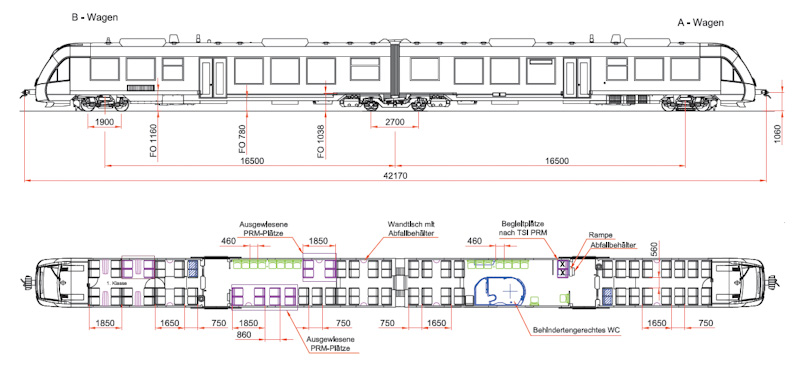“AI technologies will supersede translators in the future.” When Lars Klingbeil, former general secretary of the German political party SPD (Social Democratic Party of Germany), made this argument back in 2018, the repercussions were swift and detrimental: Immediately after, the number of registrations for translation studies in Germany dropped so significantly that the phenomenon was dubbed Klingbeil-Kink (with ‘kink’ indicating the drop). [1]
The inventors of ChatGPT, OpenAI, assess the success of their business model predicting that although the task of writers, authors, interpreters, translators, and public relations specialists cannot be fully automated by these technologies, “software is able to save workers a significant amount of time completing a large share of their tasks”. [2] Hence, according to the enterprise’s logic and its aim to maximize profits, personnel costs can be cut considerably. Further, IT engineers propose that translations do “not necessarily [require] a trained translator”. [3] They draw on experiences with employees without such a professional background who did and still do translation work, assisted, if necessary, by technical editors and/or translators [4] long before the invention of large language models (LLM) such as ChatGPT or Neural Machine Translation (NMT) such as DeepL. [5] So, why should we need technical editors and translators who are often part of multilingual technical editing teams? Why should it be profitable for a society to train them at high expense at institutions of higher education?
An industry of staff shortages
The following figures contradict Klingbeil and the IT engineers: In Germany (and similarly in other industrialized nations), far fewer students complete their training as multilingual technical writers (MTWs) than are needed on the job market. According to internal estimates – e.g., at the annual tekom university teachers’ meeting – only about a few hundred students studying at around 15 institutions of tertiary education in Germany, Austria, and Switzerland graduated as MTWs each year. Yet, tekom reported an annual average of some 4,000 job vacancies for MTWs between 2008 and 2021. [6] Statistics thus prove a lack of qualified MTW personnel.
Where AI fails to do the job
In two scientific papers, I have illustrated that human-machine interaction assisted by AI fails if it is not supervised by humans. Example 1 shows how the German city of Düsseldorf (600,000 inhabitants, many of them immigrants) misinformed inhabitants without sufficient command of German about rules of conduct during the COVID-19 pandemic. The administrators drew on Google Translate without post-editing, and thus promoted faulty AI-generated translations. [7]
Example 2 focuses on a domain in which machine-generated texts must be similarly legally reliable: A U.S. job center chatbot drew on default boilerplates when interacting with job seekers but could not give individually relevant answers. This experience showed that the chatbot disappoints users and lowers their acceptance of human-chatbot interaction. [8]
These examples reveal why MTWs will remain indispensable in the domain of technical communication in the future. In particular, special attention must be given to texts that are either used for image building and/or must comply with legal standards and product safety regulations.
Let’s go on a train ride
The following example is based on an exercise developed on the basis of my work as an MTW and carried out with students at TH Cologne (Technical University of Cologne).
This example focuses on the composition of tender specifications following the relevant norm VDI 2519-1:2002 and illustrates the extraordinary relevance of MTWs.
First, textual mistakes can potentially cause millions of dollars of economic damage to the enterprise and can considerably damage its image. Second, an interdisciplinary team in the company usually writes these texts. In tender specifications, a tendering authority determines the requirements a given technical product must meet in compliance with current rules, regulations, and technical norms. Tenderers must then develop a suitable offer. Tender specifications are legally binding. They become part of the contract when it is concluded, and they are the documents to be consulted should a lawsuit ensue. If a tenderer does not fulfill the requirements stated in the tender specifications, it is excluded from the tendering process.
Our example is taken from the sector of local public transport where federal states feature as the tendering authority offering contracts worth millions of euros to private companies that in turn commit to providing and operating rail vehicles, usually for a term of ten years.
In the exercise at TH Cologne, students were asked to work with a comparatively simple NMT, MicrosoftAzure, the translator implemented in the writing tool MicrosoftWord. Azure is also sometimes used by professionals, especially in its more elaborated versions.
Tender specifications usually draw on content and text sections used in existing tender specifications – including specifications composed in other languages. The source text (ST) and the technical drawing shown in Figure 1 are authentic snippets of a comprehensive German tender specifications document that was considerably shortened and minimally modified for teaching purposes:
ST: Der Anbieter stattet die Triebfahrzeug-Wagen mit 120 Sitzplätzen aus. 5 % der Sitzplätze im Triebfahrzeug sollen PRM-fähig sein (s. Abbildung 1).

Figure 1: Technical drawing of the A and B units, including designated PRM (passenger with reduced mobility) seats
Source: Abellio Rail 2012 [9]
The NMT MicrosoftAzure generated the following target text (TT) for English as the target culture:
TTNMT: The provider equips the double locomotives with 120 seats. At least 5% of these seats should be PRM compliant (see Figure 1).
This NMT contains serious mistakes at three levels which would induce the tendering authority to exclude the tenderer from the tendering process or damage its image.
1. Source content (text and image)
The source already contains a mistake: The EU’s legal requirements specify that 10% of all seats shall be accessible for people with impairments. Hence, the source text is faulty, and a technical editor is expected to double-check this issue. Additionally, not only the text but also the number of seats in the drawing as well as the image/text relation need to be checked. A minimum of twelve seats in Figure 1 should be purple. The wrong number of seats in the drawing could likewise entail a tenderer’s exclusion.
2. Terminology
The term “double locomotives” – generated by the NMT – is not the correct technical term. Research in the relevant norm for rail vehicles, DIN 25003:2001, reveals that the vehicle shown in the drawing is denoted as a “double traction unit”. The NMT’s word use damages the enterprise’s image because it clearly shows a massive lack of expert knowledge.
3. Text type (conventions in the target culture)
The tender specifications make it mandatory that whenever requirements are specified, the auxiliary “shall” must be used, as “should” is not legally binding. Accordingly, in case of a lawsuit, the tendering authority could not quote the offer of the tenderer to prove a breach of contract if they used the word “should”. Likewise, the tenderer does not have to fulfill details of its offer formulated with the auxiliary “should”. By the way, the same holds true for tender requirements in German that incorporate the auxiliary “würde/wuerde”.
Post-editing the TTNMT, students came up with the following target text (TTH with H for humans):
TTH: The provider equips the double traction units with 120 seats. At least 10% of these seats shall be PRM compliant (see Figure 1).
If the tenderer prepares a bid incorporating TTH, it acts in accordance with the legal standards established by the requirements for tenderer offers. Additionally, TTH casts a positive light on the company’s image because the correct usage of technical terms illustrates the competence of the MTWs and the editing team, especially the engineers, thus indicating the capability to manage future cooperation.
To achieve this, the NMT translation had to be edited at the levels of content, terminology (not completely separable from content), and text type conventions of the target culture. The writing process required pre- and post-editing activities. As the pre-editing of the text and partially also of the drawing show (10% TSI PRM instead of 5%), technical editors’ supervision – especially the correct usage of norms – is essential even in a monolingual context, i.e., without any translation involved. Considering multilingual contexts, even the very small sample discussed here proved that MTWs are indispensable for both pre-editing and post-editing activities. They check and improve NMT translations to ensure that text, technical drawings, CAD, etc., are correct in terms of content and terminology (example: “double traction unit”) and comply with text type conventions in order to adhere to legal standards (example: “shall”). In addition, high-quality text and visuals – the work of technical editors and translators – support businesses in their efforts to present a convincing image to customers, creating a positive effect on branding. Experience has shown that this might also have a very positive effect on follow-up offers.
The results of the analysis of this small text sample are exemplary for many similar ones with regard to tender requirements and tendering processes. Yet, it is quite safe to assume that they also apply to the larger scope of text types and processes of multilingual technical writing in general.
AI will not supersede MTWs
The examples of the rail vehicles and the administration communicating with its multilingual citizens using AI illustrate clearly the general necessity of employing MTWs:
- Communicative processes in enterprises and government agencies increasingly rely on language-based human-machine interaction.
- Language use does not simply fully realize a fixed set of static rules but rather is determined by conventions of the source and target cultures. Therefore, the statistical models employed by ChatGPT, MicrosoftNMT, and so forth produce output that complies only to a very limited degree with the legal norms and standards of product safety. They thus contribute very little to an enterprise’s positive image. For these reasons, expert text editors, i.e., people who enable readers to construct expert knowledge through language and multimodal texts, are necessary to support experts in technical processes and products so that processes and products are represented functionally and conventionally in a text.
- Bear in mind that composing product-safe text modules that are visible on a machine’s display or audible in text-to-speech outputs is another task that MTWs perform.
As long as these insights are not taken into account by decision-makers, there is a risk of immense economic damage, damage to the company’s image, and in the worst case, physical injury. These could be avoided if more professional attention were paid to legally binding texts for technical products, text modules, or text-to-speech output.
References
[1] S. Hansen-Schirra and C. Maaß, "Translation proper: Kommunikationsbarrieren überwinden", 2019.
[2] T. Eloundou, S. Manning, P. Mishkin and D. Rock, "GPTs are GPTs: An Early Look at the Labor Market Impact Potential of Large Language Models"
[3] M. Achtelig, "Übersetzen auf neuen Wegen", technische kommunikation, Bd. 44, Nr. 5, p. 33, 2022.
[4] A. Holste, "Semiotic Efficiency of Notational Iconicity. Negotiating Text Conventions and Text Functions in Interdisciplinary Editorial Teams," transkom, Bd. 16, Nr. 1, 2023a.
[5] R. Herwartz, "Translating with human and machine power," tcworld magazine, August 2022.
[6] D. Straub, "Branchenübergreifende Kennzahlen für die Technische Kommunikation 2021", tcworld, Stuttgart, 2021.
[7] A. Holste, "Auswirkungen automatisierter Translation auf Wissensasymmetrien. Automatisierte Translation (DE – EN – IT) einer städtischen Informationsseite für Bürger:innen zu Pandemie-Verhaltensregeln", in Übersetzung für/von Laien. Perspektiven auf die Laientranslation und Laientranslatologie in der Romania. Sektion im Rahmen des 47. Romanistentags. Hildesheim, Universitätsverlag, 2023b, pp. 3–24.
[8] A. Holste, "Knowledge Communication as an Imitation Game. About Conceptual and Empirical Boundaries of Co-Construction in Human-bot Interaction", in Concepts and Settings of Knowledge Communication. London, Routledge, 2023c, pp. 35–54.
[9] Abellio Rail NRW GmbH, "Programm zur Barrierefreiheit". Essen, 2012.

